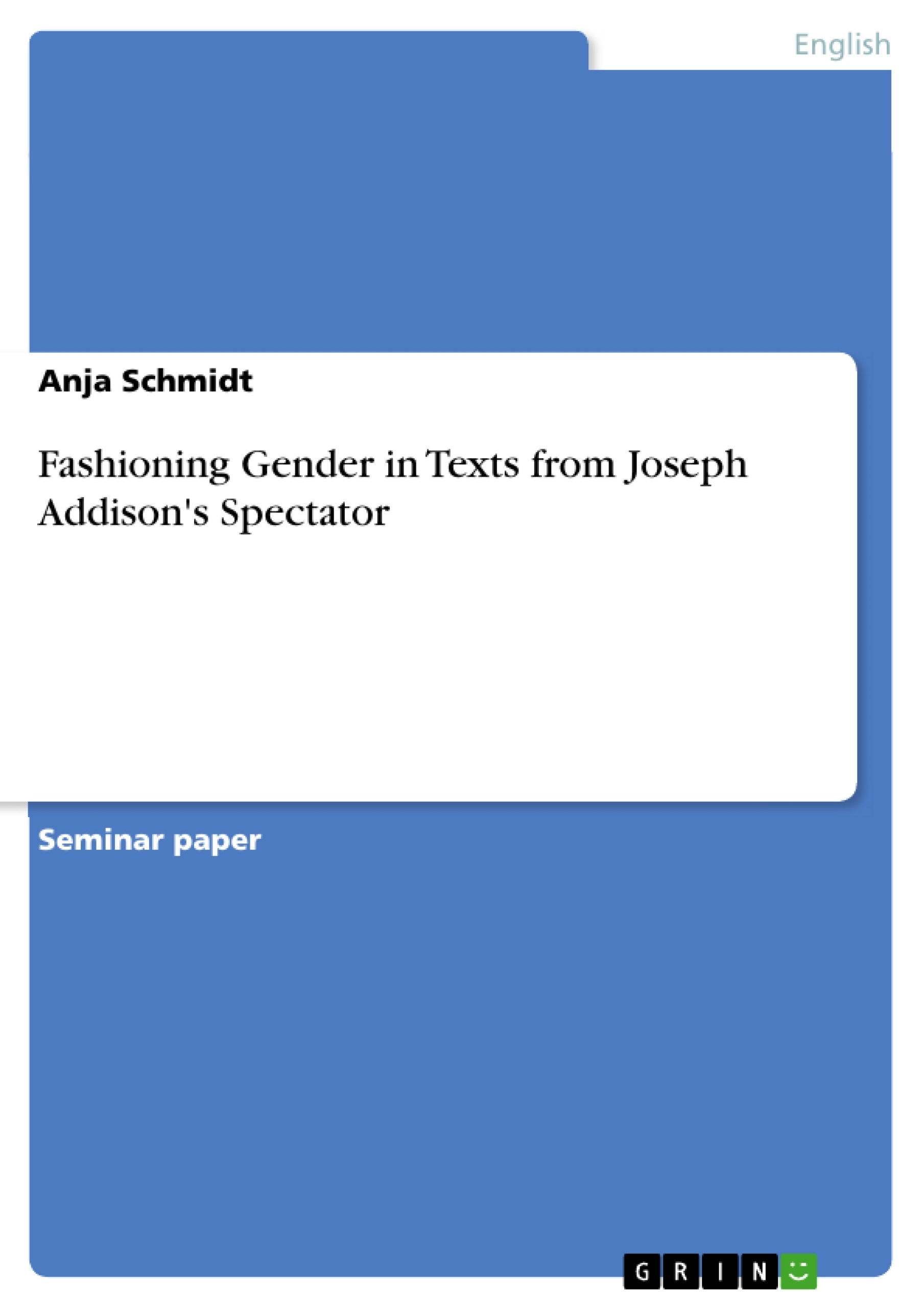Joseph Addison in the disguise of his persona Mr. Spectator is not what his name suggests.
Instead of being a mere member of the audience in the theatrum mundi he actively takes part
in the century’s favourite pastime: The Reformation of Manners.
The eighteenth century saw the rise of the new middle class which, not being included in the
traditional hierarchy, had to find codes of conduct enabling commerce and communication
with other classes.
In public, these relied heavily on presentation of the information necessary to inspire mutual
confidence rather than on representation of the individual. In opposition to this, the private
sphere was considered the place to be natural.
While men were associated with the public sphere women were thought to be naturally more
fit for a life in private, domestic surroundings.
Far from being natural, however, living there also meant presentation following the rules of
what was thought to be “women’s nature” rather than representation of one’s individuality.
Inhaltsverzeichnis (Table of Contents in English)
- Introduction
- I) The Reformation of Manners
- II) The Public Sphere
Zielsetzung und Themenschwerpunkte (Objectives and Key Themes in English)
This preview explores the role of The Spectator in shaping the emerging middle class in 18th century England. The text focuses on how the paper tackled issues like the Reformation of Manners and the creation of a public sphere.- The role of The Spectator in the Reformation of Manners
- The creation of a public sphere in 18th century England
- The influence of the middle class on social norms and conduct
- The impact of urbanisation and social mobility on social interactions
- The use of presentation and codes of conduct in public interactions
Zusammenfassung der Kapitel (Chapter Summaries in English)
Introduction
This chapter introduces Joseph Addison's The Spectator and its role in the Reformation of Manners, a social movement aimed at establishing new codes of conduct for the emerging middle class in 18th century England. It highlights the societal context of this period, characterized by the rise of the middle class and their struggle to find a place within the existing social hierarchy.I) The Reformation of Manners
This chapter delves into the historical context of the Reformation of Manners, discussing the challenges faced by the middle class in navigating social interactions with different classes. It examines the need for codes of conduct to facilitate social encounters in an increasingly urban and mobile society, where old hierarchies were no longer reliable markers of social status. The chapter also discusses The Spectator's role in contributing to the formation of these new standards of behavior.II) The Public Sphere
This chapter explores the concept of the "bourgeois public sphere," a space for political discussions, news dissemination, and polite conversation. It examines the role of coffee-houses, clubs, and theaters in creating this public sphere, highlighting how these spaces facilitated social interactions and the emergence of new forms of social etiquette. The chapter emphasizes the importance of presentation and codes of conduct in a world where old distinctions were becoming blurred, and the need for individuals to establish credibility and facilitate social encounters in a public sphere full of strangers.Schlüsselwörter (Keywords in English)
This preview examines the role of The Spectator, Reformation of Manners, the middle class, public sphere, urbanisation, social mobility, codes of conduct, presentation, representation, and social encounters. It focuses on the historical context of 18th century England and explores the ways in which individuals navigated social interactions in a rapidly changing society.- Citar trabajo
- Anja Schmidt (Autor), 2004, Fashioning Gender in Texts from Joseph Addison's Spectator, Múnich, GRIN Verlag, https://www.grin.com/document/147393



